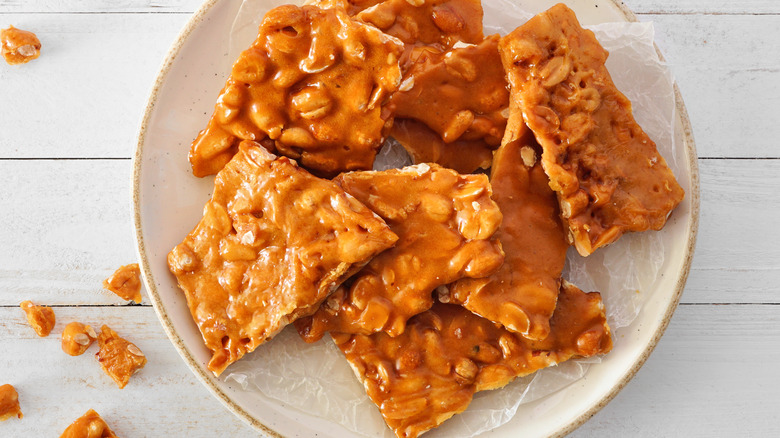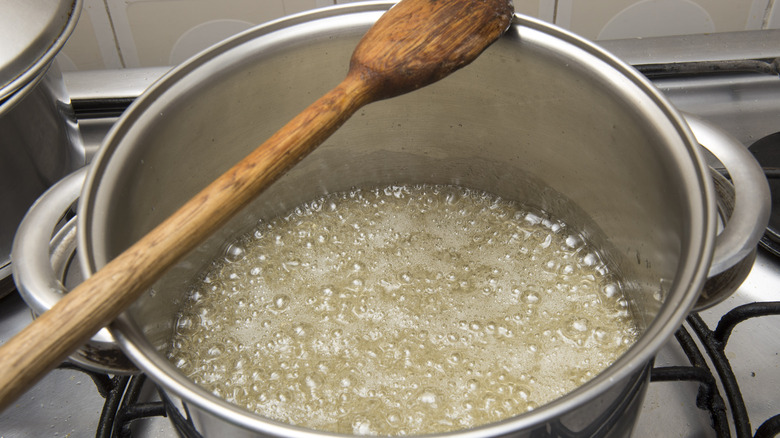The Simple Tip To Prepare Brittle Without A Thermometer
Making sugar candy can be intimidating. To make brittle, sugar is heated to the "hard crack" toffee stage, meaning a temperature of 300 degrees Fahrenheit. This is what makes your peanut brittle so crunchy and delicious. The problem is that the process involves essentially making a pretty dangerous substance: Sugar liquified over high heat can easily burn badly. It also creates a mess that quickly hardens and defies easy cleaning, and to further complicate things, it's absolutely vital that you get the temperature right when heating the sugar. After all, that's what makes the difference between what will ultimately become caramel, old-fashioned toffee, or a blackened nightmare. Now, what if we told you that you can make brittle easily and without a candy thermometer? You can. It just involves a slightly lowered temperature, a lot of swirling, and an eye for color.
Let's go through it step by step. First, like any good cook, prep your ingredients. When sugar starts to caramelize, it happens quickly, and you don't want to scramble. Have your stuff all measured out and ready to go — including the lined baking sheet that will receive this gooey goodness. Now, let's get to the hard crack.
Don't stir, don't stray, patient swirling is the way
Once you've stirred your ingredients together in a pan (probably some combination of sugar, corn syrup, butter, and baking soda), bring them to a boil over high heat. At this point, two things are of vital importance: Do not stir this mixture, and do not wander off! We know it sounds counterintuitive not to stir your baby brittle — after all, wouldn't you want to grab a spoon to incorporate those browning bits like you would a roux? No!
When that appetizing caramel color starts to form around the edge, lower the heat to medium to keep this thing from becoming a runaway train. Then swirl the pan to incorporate the mixture. (If you're using baking soda, expect some bubbles.) Swirl intermittently until your brittle turns a deep amber — the telltale sign that it is ready to be turned out onto the waiting baking sheet, where it will spread, harden, and wait to be broken up over ice cream or be incorporated into a chocolate cake. Like any good cook, trust your instincts. You don't need no stinking thermometer.

